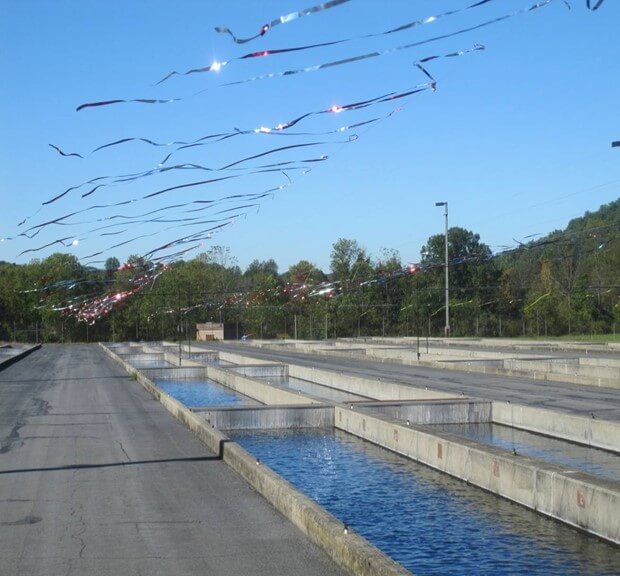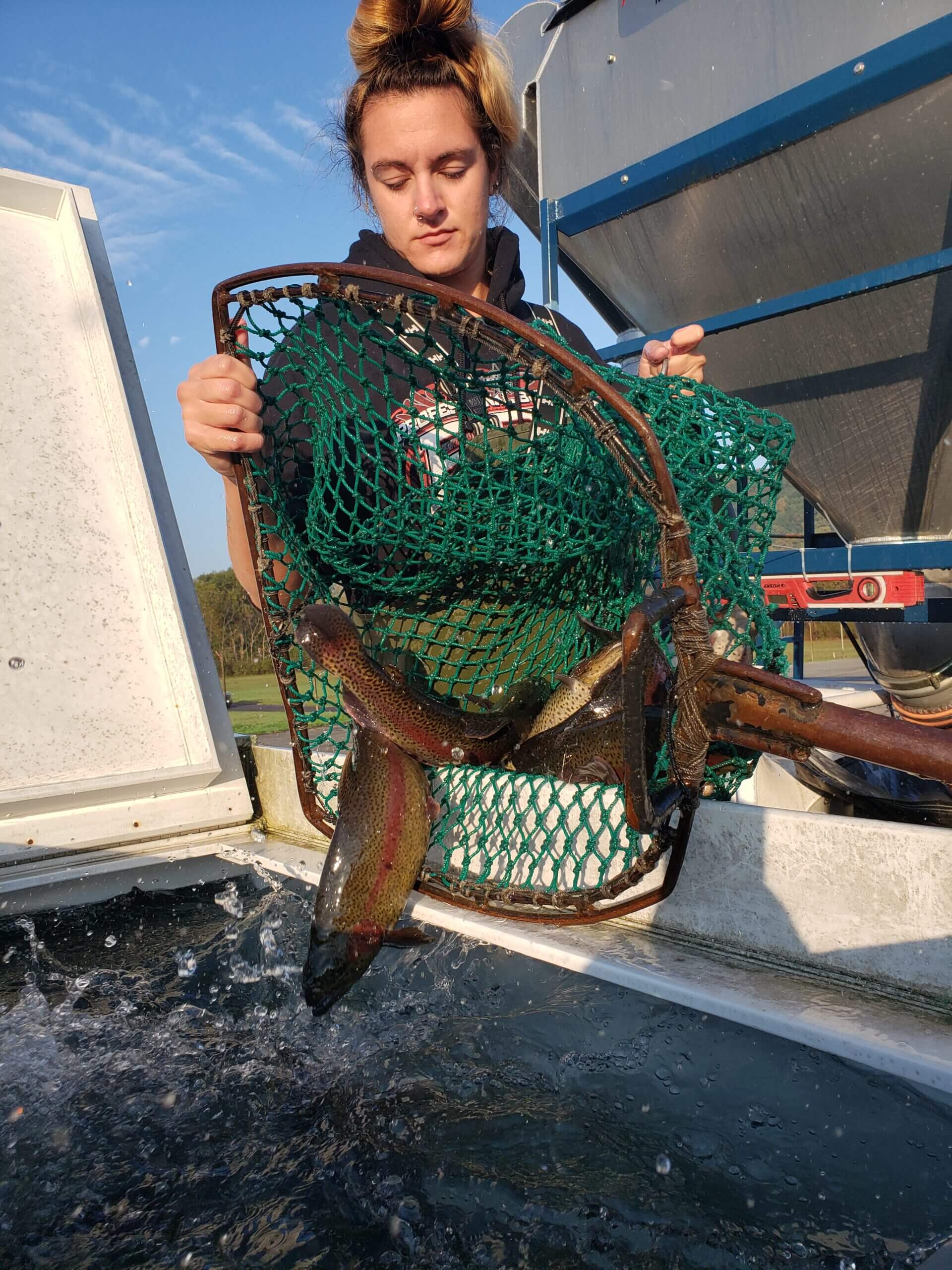Behind the Scenes at the Pequest Hatchery (Facebook LIVE, 10/11/17)
- Visit Pequest
- Attend a Program
- Schedule a Group Program
- Volunteer as a Fishing Education Instructor
- Join the Freshwater Fishing and Education E-mail Lists
- Operations
The Pequest Trout Hatchery is in the Pequest River Valley near the town of Oxford, in Warren County. The hatchery encompasses approximately fifty acres within a four-thousand-acre Wildlife Management Area. There are sixty-four concrete raceways, ten feet wide by one hundred feet long.
A stable, cold-water supply is a critical factor in trout propagation and maintenance of a production cycle. Seven on-site artesian wells supply the hatchery with up to seven thousand gallons of water per minute. This groundwater supply has a constant temperature of 11°C (52°F) year-round and capable of maintaining a continuous flow of water through the hatchery system. Flow from each of the operating wells is monitored closely and controlled remotely. Select hatchery staff have ability to remotely access and monitor the system with the use of smart phones. The hatchery is maintained by a 24/7 presence. Consistent and reliable operation of the wells also requires an intensive maintenance schedule.
New Jersey Fish and Wildlife (NJFW) currently has three trout stocking programs (Spring, Fall and Winter seasons) that utilize catchable Rainbow trout that are raised at the Pequest Trout Hatchery.
Spring Trout Stocking Program
The Spring Stocking Program is by far the largest and most popular of the trout stocking programs. The traditional trout fishery in New Jersey occurs in the spring and revolves around the season opener in early April that is eagerly anticipated by anglers. Approximately 570,000 catchable-size Rainbow trout (10.5-inch average size) are reared annually at the hatchery for the spring program. These trout are liberated over a ten-week period in over 170 ponds, lakes, and streams statewide. To increase interest and excitement during the Spring trout stocking program, NJFW mixes in approximately 7,000 broodstock with some fish weighing up to 7lbs. A three-week “pre-season” period precedes the “Opening Day” of the trout season in April, during which most trout-stocked waters are closed to fishing and are heavily stocked. A seven-week “in-season” period follows Opening Day during which the frequency and quantity of trout stocked decreases incrementally for most waters as the weeks progress. Surplus fish above the 570,000 trout stocking formula baseline are typically available each year for stocking. Fish are stocked in publicly accessible waters to supply trout for the angling public.
The distribution of over 570,000 trout to nearly 1,000 stocking points on over 170 waterbodies requires substantial internal agency communication, cooperation, and coordination. The Pequest Trout Hatchery has eight trucks each capable of transporting a maximum load of 1900 pounds of fish, or approximately 3,800 catchable trout with several smaller trucks that are used to deliver trout into smaller harder to reach locations. Hatchery staff load these trucks daily with staff from the NJFW, Bureau of Land Management (BLM) that are assigned to drive the trucks during the 10-week spring stocking period.
Fall Trout Stocking Program
The Pequest Trout Hatchery raises approximately 21,000 two-year old Rainbow trout averaging 14-15 inches for the Fall stocking program which are stocked in October. Also, about a thousand larger three-year-old broodstock are added into the loads. This program was initiated in 1987 and is intended to complement the spring program and expand trout fishing opportunities statewide. Trout fishing typically tapers off during the summer when conditions are least favorable for trout (higher water temperatures and low stream flows) and anglers are less successful (fewer, warier trout). Fall trout-stocking has become a popular stocking program offered by New Jersey Fish and Wildlife, particularly since 2006 when the Division began stocking only larger two-year old trout. Anglers enjoy the additional fish provided by the NJFW as well as the opportunity to fish the waters of New Jersey during one of the most beautiful times of year. The big fish, cool water, spectacular scenery, and great weather combined make the fall season what many consider to be New Jersey’s premium trout fishing season.
Winter Trout Stocking Program
During the late fall and winter interest in trout fishing typically wanes when shorter day length, colder air and water temperatures, and inclement weather discourage angler outings. The Winter Trout Program was initiated in 2000 to add variety to the DFW’s trout program by offering anglers the opportunity and incentive to venture forth and brave the winter elements in pursuit of trout. Currently under this program the hatchery raises approximately 4,500 catchable-size Rainbow trout (14 to15 inch average size) that are stocked in 18 lakes and ponds statewide during two days in November.
Hatchery Operations




The beginning of the Rainbow trout cycle begins annually either late August or early September. Broodstock are sorted by sex. The females are than checked weekly to see if they are ripe.
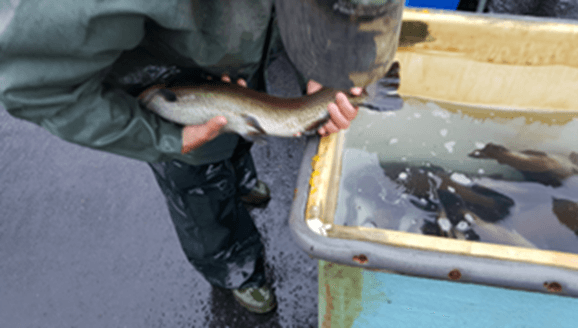

When the female trout become ripe, the eggs are stripped and fertilized with the milt from the males. This generally takes place weekly through October until our egg quota is met. Eggs are then disinfected before being put in trays and jars.
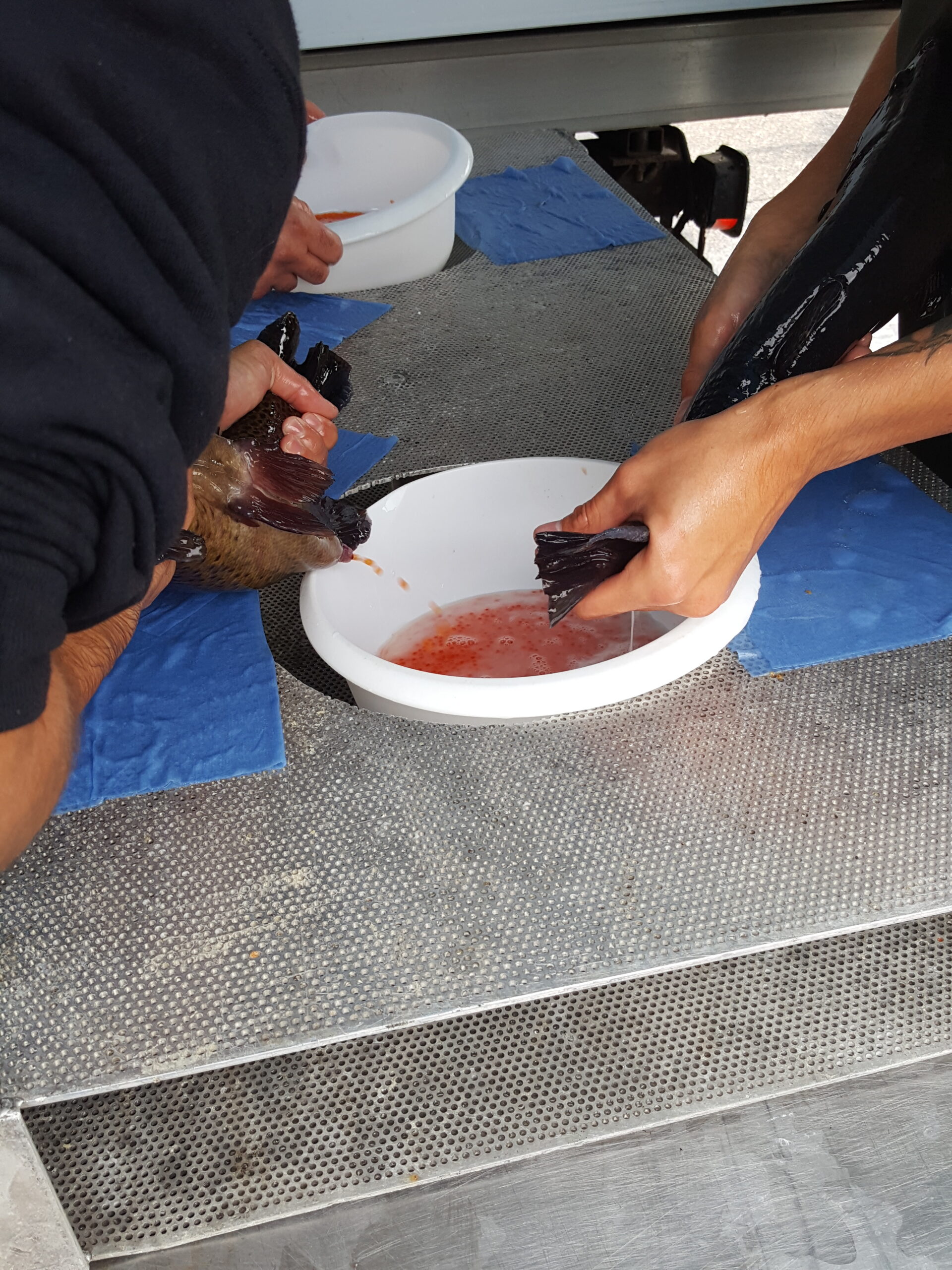
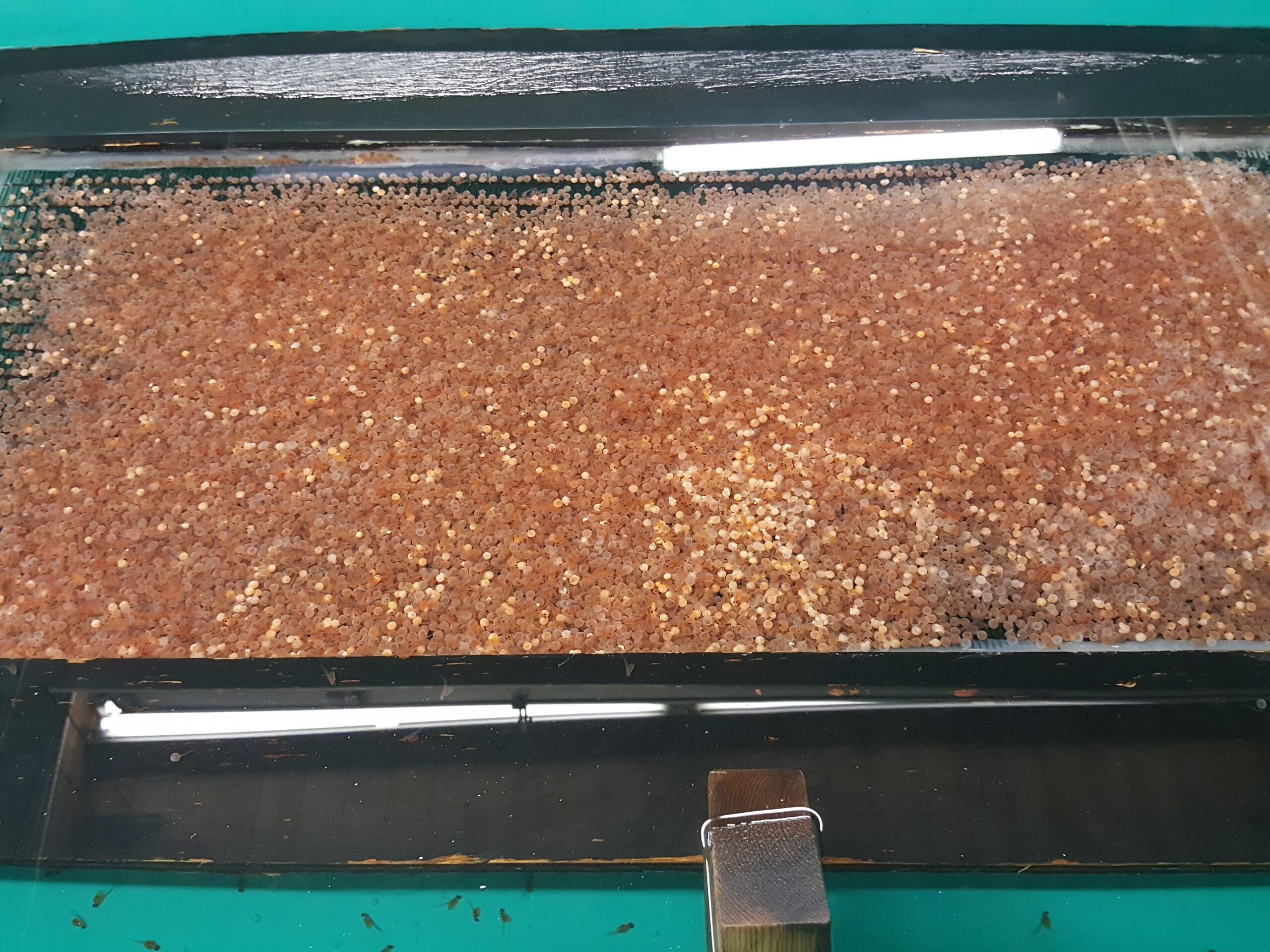
Approximately 1.5 million rainbow trout eggs are taken from roughly 600 females annually. Eggs spend about 32 days in the incubator trays or jars trays until they are ready to hatch and then are put on hatching trays in the tanks.




After hatching the trout are reared in the Nursery building until late March, they will start to be moved outside to the raceway system when the pools are cleaned as the previous Spring production fish are stocked. This process will take until June to empty the Nursery building.



Once trout are moved outside they will be sorted in the early spring and late summer. Growth will continue to be monitored monthly. Feed amounts and sizes are adjusted monthly to reach our final stocking goals for each stocking program.



Finally, after 18 months of rearing, Rainbow Trout are ready to begin being stocked for the Spring Stocking program come mid- March when they reach a 10.5-inch average. About 1,000 trout are also tagged as part of the Hook-A-Winner Program during each spring.


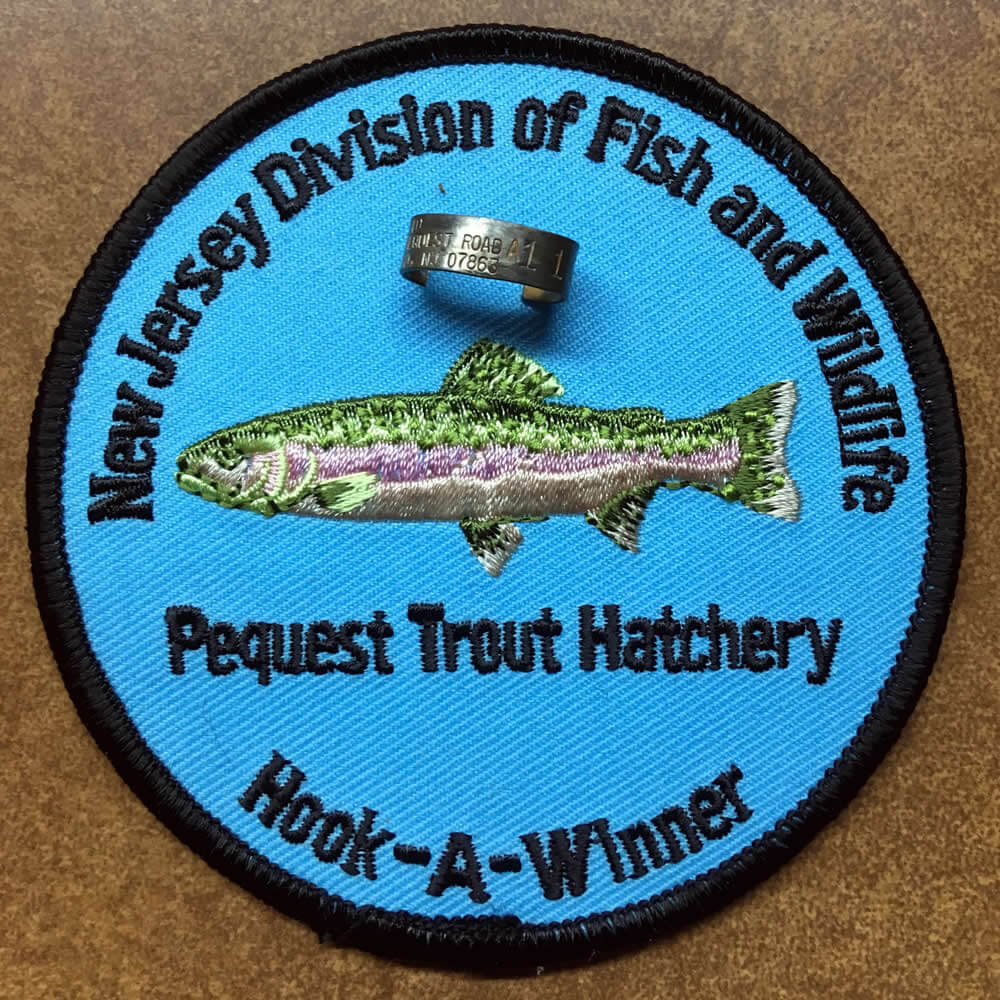
During stocking trout will be crowded and pumped onto the in-hatchery trucks, which will drive out to the larger stocking trucks outside of the fenced area to be loaded. This done for biosecurity, which continues to be a major component in restricting the bacteria from entering the hatchery as well as methods of sterilization.

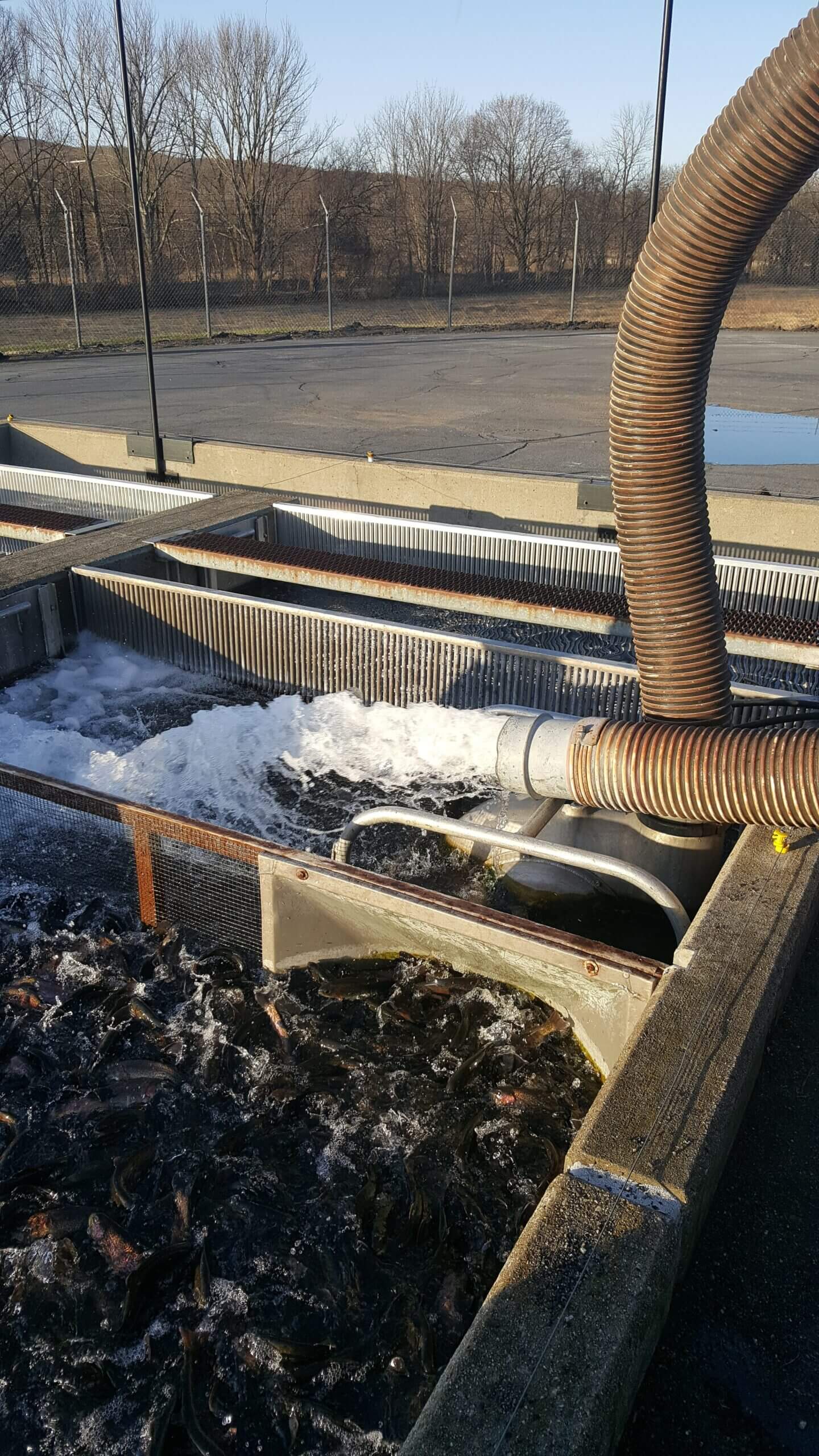

After 24 months of rearing, trout for the Fall and Winter Programs are ready to be stocked. Selected trout are held to become two and three-year old Broodstock to continue the cycle. There are always 3-year classes on-site at the hatchery.
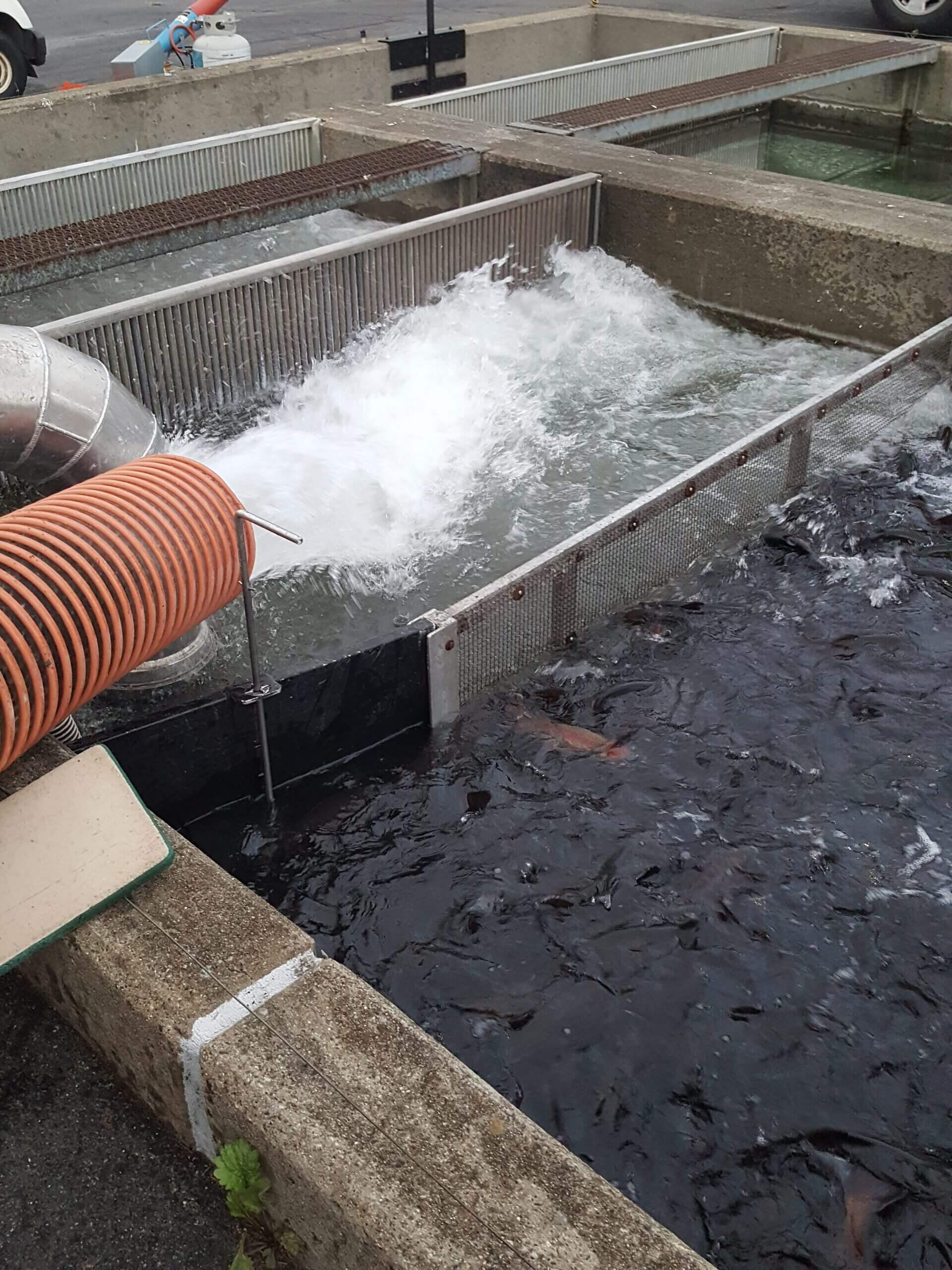
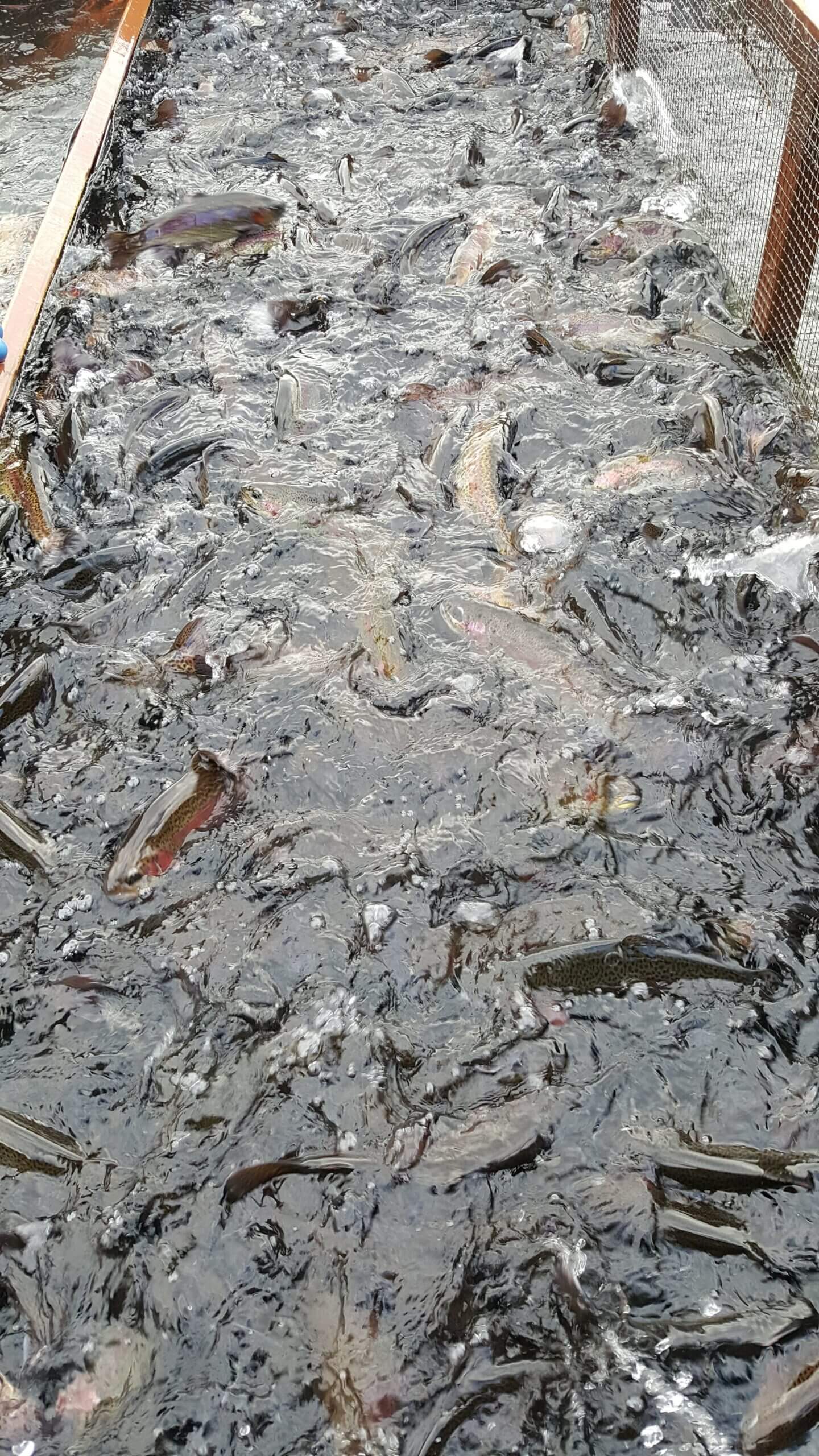
Maintenance
Maintaining the infrastructure to supply a mile and a half of concrete raceways with an uninterrupted supply of cold, clear water is a significant task. The hatchery’s complex systems must be checked, tested, and maintained to protect the critical fish stock. Several diesel backups keep the wells running in the event of a power outage, which occur with some frequency in the Pequest Valley. The fact the hatchery is in operation 24 hours a day, 365 days a year, makes maintaining these systems challenging. Routine maintenance of infrastructure is critical.

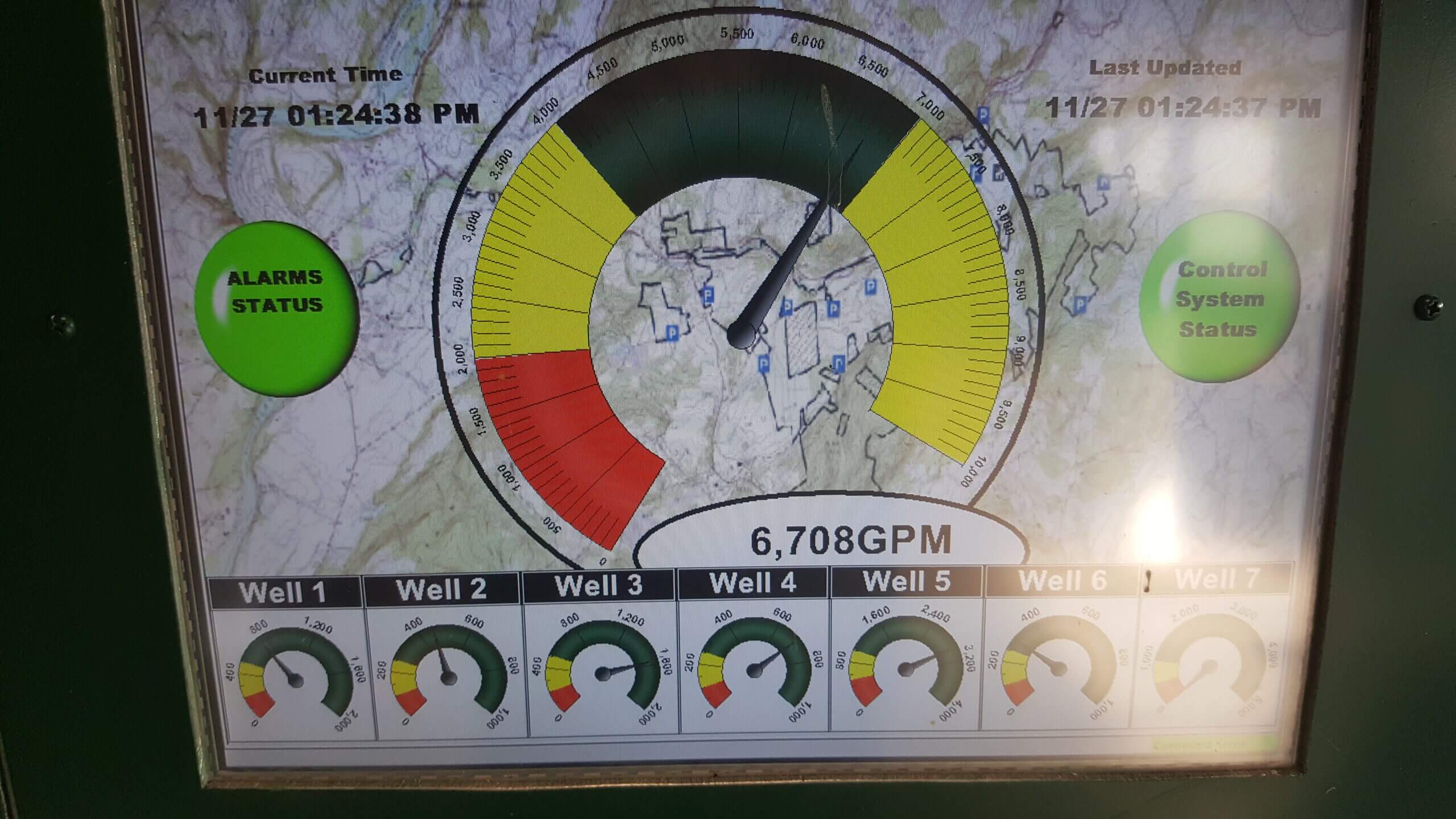
 Official Site of The State of New Jersey
Official Site of The State of New Jersey

